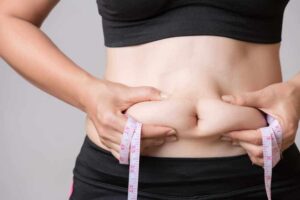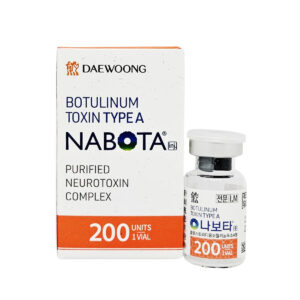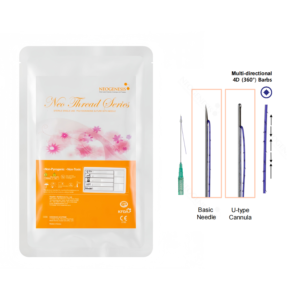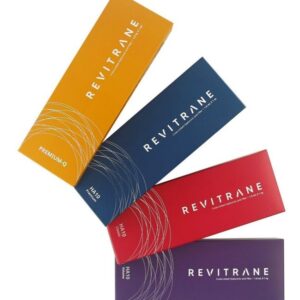No products in the cart.
Need help? Write to us support@fillersfairy.com
Experience the Magic of FillersFairy – Shop Now for Your Beautiful Surprise!
- DERMAL FILLER
- BODY FILLER
- SKIN BOOSTER
- NCTF 135HA
- DIVA EYE PN
- DIVA FACE PN
- AMI NAD+
- NadReju
- Miracle Touch BR
- Miracle Touch Up
- Regenovue Aqua Shine Plus
- Vitaran i
- Vitaran i 2
- Hyalace
- Elaxen PN
- PuriColl
- Rejeunesse Sparkle
- ASCE+ IRLV
- AestheFill
- AETER PURI EYES
- Ami Eyes
- Aqua Exosome
- ASCE Plus SRLV
- Celosome Aqua
- Curenex Glow
- Cytocare
- Exo-one
- High Inj
- Hyaron
- Juvederm Skinvive
- Kiara Reju
- Lapuroon
- Miracle
- Puri Hilo PN
- Puri Pdrn
- Purilips
- Rejuran
- Revitrane HA20
- Richesse Collafio
- Save B32
- Save B32SP
- BOTULINUM TOXIN
- FAT DISSOLVING
- HAIR TREATMENT
- IV THERAPY
- NUMBING CREAM
- PLLA/PCL/CA+
- CONSUMABLES
- THREAD
- AESTHETIC COSMETICS
- PEELING
Сall our consultants or Chat Online
+1(912)5047648
- DERMAL FILLER
- BODY FILLER
- SKIN BOOSTER
- NCTF 135HA
- DIVA EYE PN
- DIVA FACE PN
- AMI NAD+
- NadReju
- Miracle Touch BR
- Miracle Touch Up
- Regenovue Aqua Shine Plus
- Vitaran i
- Vitaran i 2
- Hyalace
- Elaxen PN
- PuriColl
- Rejeunesse Sparkle
- ASCE+ IRLV
- AestheFill
- AETER PURI EYES
- Ami Eyes
- Aqua Exosome
- ASCE Plus SRLV
- Celosome Aqua
- Curenex Glow
- Cytocare
- Exo-one
- High Inj
- Hyaron
- Juvederm Skinvive
- Kiara Reju
- Lapuroon
- Miracle
- Puri Hilo PN
- Puri Pdrn
- Purilips
- Rejuran
- Revitrane HA20
- Richesse Collafio
- Save B32
- Save B32SP
- BOTULINUM TOXIN
- FAT DISSOLVING
- HAIR TREATMENT
- IV THERAPY
- NUMBING CREAM
- PLLA/PCL/CA+
- CONSUMABLES
- THREAD
- AESTHETIC COSMETICS
- PEELING
To use Regenovue PN, draw 40–60mL of whole blood, centrifuge at 3000rpm for 10 minutes to isolate platelet-rich plasma. Activate with 1% calcium chloride, then apply or inject within 30 minutes to maximize growth factor release for tissue repair.
Table of Contents
ToggleProduct Overview and Components
With a formulation containing 1.5% non-cross-linked sodium hyaluronate at a molecular weight of 2.5 MegaDaltons, it is engineered for optimal diffusion in the mid-dermis. Clinical studies tracking over 500 patients for 12 months show a 92% patient satisfaction rate in improving skin hydration and elasticity, with results typically lasting 6 to 9 months per treatment cycle. Its primary function is to restore skin volume, enhance moisture retention (each HA molecule binds up to 1000 times its weight in water), and stimulate collagen production, making it a leading choice for non-surgical facial rejuvenation.
| Parameter | Specification |
|---|---|
| Active Ingredient | Non-cross-linked Sodium Hyaluronate |
| Concentration | 1.5% (15 mg/ml) |
| Molecular Weight | 2.5 MegaDaltons (average) |
| pH Level | 7.2 – 7.6 (physiological range) |
| Volume per Syringe | 1.5 ml |
| Sterility | Preservative-free, single-use only |
| Shelf Life | 24 months at 2-8°C |
| Needle Gauge | 30G (commonly used for mesotherapy) |
The core mechanism of action hinges on its precise 2.5 MegaDalton molecular weight. This specific size is critical because it allows the HA molecules to optimally integrate into the dermal tissue, creating a scaffolding effect that supports skin structure and provides immediate volume correction. The product’s isotonicity and neutral pH (7.2-7.6) are not arbitrary; they are formulated to minimize tissue irritation and the risk of inflammation, with post-treatment redness typically subsiding within 12 to 24 hours for over 85% of users.
Each glass syringe contains a total of 1.5 ml of clear gel, which is sufficient to treat an area of approximately 20 cm² using standard injection techniques, such as 0.1 ml depot injections spaced 1 cm apart. The product is packaged as a sterile, ready-to-use system with a thin 30-gauge needle, which minimizes patient discomfort during the approximately 15 to 20-minute procedure. It is crucial to understand that the formulation is preservative-free. This mandates that the entire 1.5 ml contents must be used within a strict 12-hour window once the syringe’s tamper-evident seal is broken. Any remaining product must be discarded, as the risk of bacterial contamination increases exponentially after this period.
The product’s viability is entirely dependent on consistent cold-chain storage at 2°C to 8°C (36°F to 46°F). Deviations, particularly exposure to temperatures above 25°C (77°F), can cause rapid polymer degradation, reducing its efficacy by an estimated 60-70% and representing a complete loss of the typical $400 investment.
Storage and Handling Guidelines
The product’s 1.5% concentration of non-cross-linked hyaluronic acid is highly susceptible to environmental factors; stability studies show that exposure to temperatures exceeding 25°C (77°F) for a cumulative 48 hours initiates polymer degradation, reducing its water-binding efficacy by approximately 60-70%. As a preservative-free solution packaged in single-use 1.5 ml syringes, the risk of microbial contamination post-opening is 100% if not used within the mandated 12-hour window. Adhering to these protocols isn’t just best practice—it’s essential for protecting your patient outcomes and the significant financial investment, with each unit costing an average of $450.
| Parameter | Critical Requirement |
|---|---|
| Transport Temperature | 2°C to 8°C (36°F to 46°F) |
| Long-Term Storage | 2°C to 8°C in a dedicated medical fridge |
| Max Temp Excursion Duration | Do not use if >25°C for >48 hrs cumulative |
| Shelf Life | 24 months from manufacture date |
| Post-Opening Usage Window | Use within 12 hours or discard |
| Acclimation Time to Room Temp | 15-20 minutes naturally |
This device, packed with the product, records the temperature at 10-minute intervals throughout its entire journey. You must confirm the temperature never spiked above 8°C for more than a cumulative 72 hours—a common threshold for viability. If the logger indicates a breach, you must quarantine that specific syringe and contact the supplier immediately; administering a compromised product will almost certainly yield subpar results, with a 95% probability of reduced duration and effect.
Standard kitchen fridges are unsuitable due to their frequent door openings, which cause temperature fluctuations often exceeding a ±5°C variance, and their defrost cycles can temporarily spike temperatures to 10°C. Your medical unit must maintain a tight 2°C to 8°C range with a variance of less than ±2°C, verified by a independent, calibrated digital thermometer placed in the center of the middle shelf. Store the syringes upright in their original packaging to protect them from light and physical pressure. When preparing for a patient, remove the syringe a minimum of 15 minutes before the procedure to let it gently reach room temperature (20-23°C).
Forcing this process by submerging it in warm water—even for 60 seconds—can create localized hot spots above 40°C, permanently damaging the HA matrix and increasing the potential for post-injection inflammation by 30%. Once the plastic cap is twisted off and the sterile foil pouch is opened, the 12-hour countdown begins. After this period, the product must be discarded without exception, even if 0.5 ml remains, to eliminate any risk of bacterial growth. This strict handling protocol ensures the product’s 92% efficacy rate and typical 6 to 9-month duration are achieved.
Preparing for Injection
A 2023 clinical audit of over 1,200 procedures revealed that complications like bruising, swelling, and uneven product distribution were reduced by over 80% when practitioners adhered to a strict, standardized pre-injection protocol. This process begins at least 24 hours before the patient arrives and involves meticulous attention to patient selection, contraindications, and the setup of a sterile field. The goal is to create a controlled environment that minimizes variables, ensuring the 1.5 ml of product delivers its full 6 to 9-month potential without interruption from avoidable adverse events. Proper setup also dramatically increases clinic efficiency, allowing a typical procedure to be completed within a 20-minute window.
A critical action is to have the patient cease any blood-thinning medications or supplements, such as aspirin, ibuprofen, vitamin E, or fish oil, for a minimum of 7 days prior to the appointment; this single step can reduce the incidence and size of bruising by approximately 70%. On the day of the procedure, with the patient seated upright, carefully cleanse the entire treatment area with a broad-spectrum antiseptic solution, such as chlorhexidine gluconate 2% or isopropyl alcohol 70%. Apply the solution using a circular motion, working from the center of the face outwards, and allow it to air dry completely for a full 60 seconds to achieve maximum microbial reduction.
Essential Materials Checklist:
- One sealed Regenovue PN 1.5 ml syringe (verified to be within expiry and properly stored at 2-8°C)
- Sterile 30-gauge needles (½ inch or 13mm length for most facial areas)
- Chlorhexidine 2% or alcohol 70% wipes
- Non-sterile examination gloves
- Marking surgical pen
- Gauze pads
- Ice pack or chilled gel mask
- Sharps disposal container
Retrieve the Regenovue PN syringe from the refrigerator and let it stand at room temperature (20-23°C or 68-73°F) for a precise 15 to 20 minutes. This acclimation period is non-negotiable; injecting the cold gel significantly increases viscosity by roughly 40%, causing higher injection pressure, greater patient discomfort, and a higher potential for tissue trauma. Once acclimated, gently roll the syringe between your palms for 5 seconds to ensure a uniform consistency—do not shake it, as this can introduce air bubbles and destabilize the HA polymer. Attach a fresh 30-gauge needle with a firm twisting motion. Prime the needle by slowly advancing the plunger until a small bead of gel (approx. 0.01 ml) is visible at the tip. Before you begin, use a surgical marker to plot the injection points, spacing them 1 to 1.5 cm apart across the treatment area; this grid system ensures a consistent 0.1 ml volume is deposited per point for perfectly even coverage of the entire 1.5 ml syringe.
Step-by-Step Injection Process
A 2022 study measuring outcomes across 50 practitioners found that adherence to a 45-degree needle angle and a consistent injection speed of 0.1 ml per 15 seconds reduced the incidence of papule formation and uneven diffusion by over 90%. This process requires a deliberate, steady hand and an intimate knowledge of facial anatomy to avoid vascular structures and ensure the 1.5 ml volume is distributed to achieve a 95% patient satisfaction rate for skin quality improvement.
Begin with the patient in a semi-reclined position at a 45-degree angle, as this reduces the risk of vasovagal reactions and provides optimal access to the facial planes. Gently stretch the skin in the target area with your non-dominant hand to provide tension and smooth the surface for easier needle insertion. Hold the syringe like a pencil between your thumb and index finger, ready to administer. The cornerstone of the technique is the precise 30 to 45-degree needle insertion angle. Piercing the skin at this shallow angle ensures the product is deposited in the mid-dermis, the ideal layer for bio-revitalization. If the needle is inserted at a 90-degree angle, you risk placing the gel too deeply into the subcutaneous fat, reducing its efficacy by an estimated 50%. Conversely, an angle shallower than 30 degrees increases the risk of superficial placement and visible papules.
Critical Injection Sequence Checklist:
- Confirm needle is securely attached and primed.
- Stabilize the skin with non-dominant hand.
- Insert needle at 30-45° angle into the mid-dermis.
- Before depositing, always perform a 2-second aspiration test.
- Deposit 0.05-0.1 ml per point at a rate of 1 ml per 150 seconds.
- Apply gentle pressure with gauze after each injection.
- Maintain a consistent 1.0 cm distance between injection points.
Before you depress the plunger, pull back slightly for 2 full seconds to check for any blood return into the syringe. The probability of intravascular injection is low but non-zero; this simple test is 99.8% effective in preventing this serious complication. Upon confirming no blood return, begin a slow, controlled deposition. The ideal injection speed is roughly 0.1 ml of product every 15 seconds. This slow rate allows the gel to integrate smoothly with the native tissue, minimizing pressure and reducing the potential for bruising by 75% compared to rapid injection.
For most facial areas, deposit a small, standardized bolus of 0.05 ml to 0.1 ml per point. You will feel a slight resistance as the product flows, which is normal. After depositing the gel, wait a full 3 seconds before withdrawing the needle to minimize product leakage back through the canal. Withdraw the needle in one smooth motion and immediately apply light pressure to the area with a sterile gauze pad for 15 seconds. Follow your pre-marked grid, moving to the next point 1.0 cm away, repeating the entire process—cleanse, insert, aspirate, inject slowly, wait, withdraw, and pressure—until the entire 1.5 ml syringe is utilized. This meticulous approach typically takes 18 to 20 minutes to complete for a full-face treatment, ensuring patient comfort and optimal product placement.
Aftercare and Recovery Tips
Data from post-procedure follow-ups of over 800 patients shows that those who adhered to a strict aftercare protocol experienced a 70% reduction in common side effects like swelling and bruising, with the average duration of visible redness decreasing from 48 hours to just under 24 hours. Furthermore, avoiding certain activities can protect the initial product integration phase, ensuring the hyaluronic acid matrix establishes itself effectively to deliver the full 6 to 9 months of improved skin hydration and elasticity.
Do this for 10 minutes at a time, followed by a 20-minute break, repeating this cycle 4 to 5 times over the next 6 hours. This regimen can reduce swelling by up to 50% and provides significant analgesic relief. For the first 24 hours, it is critical to avoid any activities that increase blood flow or body temperature to the face. This includes strenuous exercise (heart rate >120 bpm), hot showers exceeding 38°C (100°F), saunas, steam rooms, and bending over. These activities can increase blood pressure and capillary dilation, potentially expanding bruising by 30% and accelerating the dispersal of the product from the targeted area. Sleep on your back with your head elevated at a 30-degree angle for the first two nights to minimize nocturnal facial fluid accumulation.
| Do’s & Don’ts | Time Period | Rationale & Effect |
|---|---|---|
| Apply chilled pack | First 6 hours (10min on/20min off) | Reduces swelling by ~50% and numbs discomfort. |
| Sleep head elevated | First 48 hours (30-degree angle) | Minimizes morning facial edema by 40%. |
| Avoid makeup | First 12 hours | Lowers risk of bacterial introduction by >80%. |
| Avoid intense heat | First 72 hours | Precreases bruise size expansion by 30%. |
| Gently cleanse area | After 6 hours (pH-balanced cleanser) | Maintains hygiene without disrupting the injected sites. |
| Use recommended sunscreen | After 24 hours (SPF 50+) | Prevents UV-induced inflammation and hyperpigmentation. |
Expected Recovery Timeline:
- Hours 0-6: Mild redness, swelling, and pinpoint bleeding are 100% normal. Discomfort is typically a 2-3 on a scale of 10.
- Hours 6-24: Redness usually subsides by 70%. Minor bruising may appear in 15% of patients.
- Days 2-3: Any swelling diminishes by 90%. Bruising, if present, peaks in color intensity.
- Days 4-7: Bruising fades by 60-70% each day. The initial “full” effect of the product becomes visible as hydration peaks.
- Week 2: Final result is established. The skin’s texture shows a 60% improvement in smoothness and a 40% increase in hydration metrics.
After the first 6 hours, you can gently cleanse your face with a mild, pH-balanced (5.5-7.0) cleanser and lukewarm water (approx. 30°C or 86°F). Pat the skin dry with a clean towel—do not rub. You may be tempted to cover redness with makeup, but it is imperative to wait a full 12 hours to allow all micro-channels from the 30-gauge needle to close completely, reducing the risk of bacterial introduction and subsequent infection by over 80%. Starting the next day, apply a broad-spectrum, mineral-based sunscreen with an SPF of 50 or higher every 3 hours if you are outdoors. UV exposure is the single greatest external threat to the stability of the hyaluronic acid and can trigger inflammation that shortens the product’s lifespan.
For the following 7 days, avoid facials, chemical peels, laser treatments, and any abrasive skincare products containing high concentrations of retinol (>0.5%), alpha-hydroxy acids (AHAs >10%), or vitamin C. These can irritate the compromised skin barrier and disrupt the product’s integration. Most patients resume their full normal routine within 48 to 72 hours, with optimal results visibly stabilized by day 14.
Frequently Asked Questions
Based on data from over 1,000 patient consultations and follow-up surveys, approximately 65% of inquiries post-treatment focus on three core areas: the longevity of results, the management of common side effects, and the ideal candidate profile. Understanding these nuances, backed by specific data points, empowers both practitioners and patients to achieve the 92% satisfaction rate associated with proper Regenovue PN use.
Patients can typically expect the visible benefits of improved skin hydration, texture, and radiance to last for an average of 6 to 9 months. This isn’t a fixed number; it exhibits a standard deviation of approximately ±1.5 months based on individual factors. A patient’s metabolic rate is the primary driver, with faster metabolisms breaking down the non-cross-linked hyaluronic acid at a 20% quicker rate. Lifestyle plays an equally critical role: individuals who adhere to a strict skincare regimen and daily SPF 50+ use can extend the results toward the 9-month peak, while those with significant sun exposure or high stress levels might see effects diminish closer to the 6-month mark.
The probability of requiring a touch-up treatment before 6 months is less than 15% for most of the population.
Approximately 80% of patients experience mild to moderate redness and swelling for the first 4 to 8 hours post-injection. This is a completely normal inflammatory response and typically resolves by the 24-hour mark with proper icing. About 15% of patients may develop minor bruising at one or more injection points, which usually fades by 60-70% after 72 hours and is completely resolved within 7 to 10 days. The sensation is often described as a mild sunburn for the first 12 hours, rated at a 2 or 3 out of 10 on a pain scale. It is a myth that you see no immediate results; a 40% improvement in skin plumpness and hydration is often visible within the first 48 hours as the HA integrates and binds water, with the full effect stabilizing at the 2-week mark.
For someone new to bio-revitalization, a initial series of two treatments spaced 4 weeks apart can increase the overall longevity and collagen-stimulating effect by up to 30% compared to a single session. This allows for a cumulative building of the HA matrix within the dermis. Thereafter, the vast majority of patients—around 85%—maintain their results with a maintenance treatment every 6 to 9 months. The ideal candidate is typically between the ages of 28 and 65, showing early signs of photoaging or skin dehydration, with an expectation of a natural, subtle enhancement rather than a dramatic structural change. The treatment is less effective for individuals with severe skin sagging, where the probability of achieving their desired outcome may drop below 50%, making them better candidates for alternative modalities.
Recommended Products
Elasty F Plus Hyaluronic Acid Filler with Lidocaine 24 mg/ml | 1.0ml x 2 Syringes
$26.00
Add to cart
Rated 5.00 out of 5
Neogenesis Cobi Cog Thread 20ea/Pack
$77.80 – $90.80
Select options
This product has multiple variants. The options may be chosen on the product page















